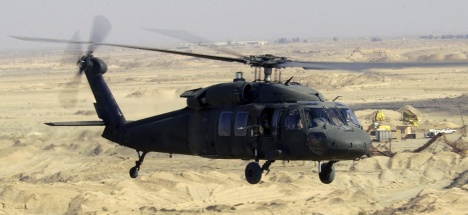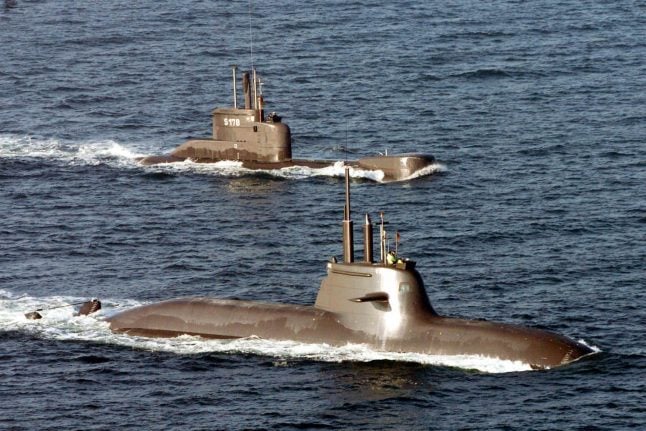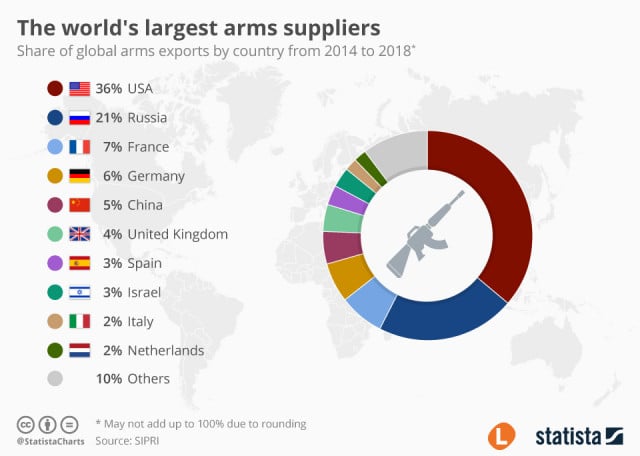As the global economic crisis cuts into defence spending, conflicts around the world are also becoming smaller, shorter and less deadly, and the number of wars between states are at historically low levels, the Stockholm International Peace Research Institute said.
The Arab Spring also demonstrated that new types of conflicts are emerging, it added.
World military expenditure in 2011 was essentially flat at $1.73 trillion — an increase of just 0.3 percent from 2010 — representing 2.5 percent of global gross domestic product or $249 per person, SIPRI said in a report.
“However, it is still too early to say whether this means that world military expenditure has finally peaked,” the think tank wrote.
Nuclear arsenals declined last year, the report said, as the United States and Russia further reduced their inventories of strategic nuclear weapons.
At the start of 2012, eight countries — Britain, China, India, Israel, France, Pakistan, Russia and the United States — held some 19,000 nuclear warheads, compared to 20,530 at the start of 2011, it said.
However, long-term modernisation programmes under way in nuclear states “suggest that nuclear weapons are still a currency of international status and power,” SIPRI researcher Shannon Kile said.
“In spite of the world’s revived interest in disarmament efforts, none of the nuclear weapon-possessing states show more than a rhetorical willingness to give up their nuclear arsenals just yet,” he said.
The report noted that Iran and Syria came under intensified scrutiny in 2011 for allegedly concealing military nuclear activities.
“The unresolved Iranian and Syrian nuclear controversies raised further doubt about the efficacy of international legal approaches, in particular the role of the UN Security Council, in dealing with suspected or known cases of states violating important arms control treaty obligations and norms.”
In Iran, “the main question now is whether the current negotiations between Iran and the P5+1 states (UN Security Council members Britain, China, France, Russia and the US plus Germany) will yield concrete results,” Kile told AFP.
“The prospects for reaching a negotiated settlement remain unclear, with both sides engaged in political gamesmanship,” he added.
As for Syria, international concern about its alleged undeclared nuclear activities has been “completely overshadowed” by the public uprising in the country and the Security Council “has shown no willingness” to take up the matter, he said.
Meanwhile, SIPRI said North Korea was believed to have separated roughly 30 kilos of plutonium, enough to build up to eight nuclear weapons “depending on North Korea’s design and engineering skills.”
According to a leaked report prepared in 2011 by the Security Council, the country has pursued a uranium-enrichment programme for several years or even decades, but “it is not known whether North Korea has produced highly-enriched uranium for use in nuclear weapons,” SIPRI said.
The institute also noted that civil wars in developing countries were now the main form of conflict worldwide.
“We have witnessed the practical disappearance of wars between states — with numbers at a historically low level,” armed conflict researcher Neil Melvin told AFP.
Nowadays, “violence emerges within states, escalating from political opposition to civil wars,” as in Libya and “it seems we are reaching that point with Syria,” Melvin said.
Finally, the think tank said the Arab Spring demonstrated the growing complexity of armed conflict.
“The events of last year were not isolated in terms of contemporary conflict trends,” Melvin explained, saying they “echoed changes that have been occurring in armed conflict for decades.”
“Taken together, these changes suggest there’s a new kind of conflict environment emerging, one in which international interventions become far more difficult to carry out,” he said.
SIPRI, which specialises in research on conflicts, weapons, arms control and disarmament, was created in 1966 and is 50-percent financed by the Swedish state.




 Please whitelist us to continue reading.
Please whitelist us to continue reading.
Member comments